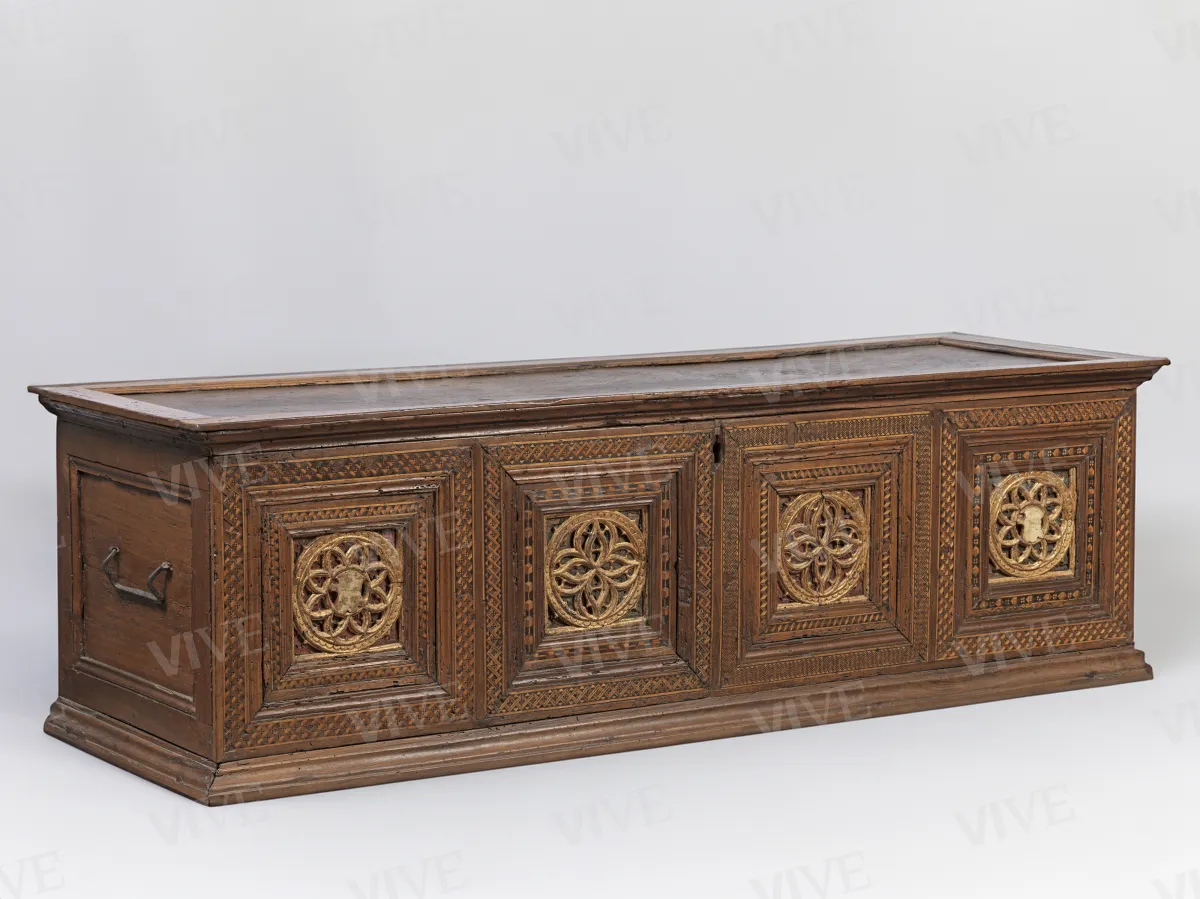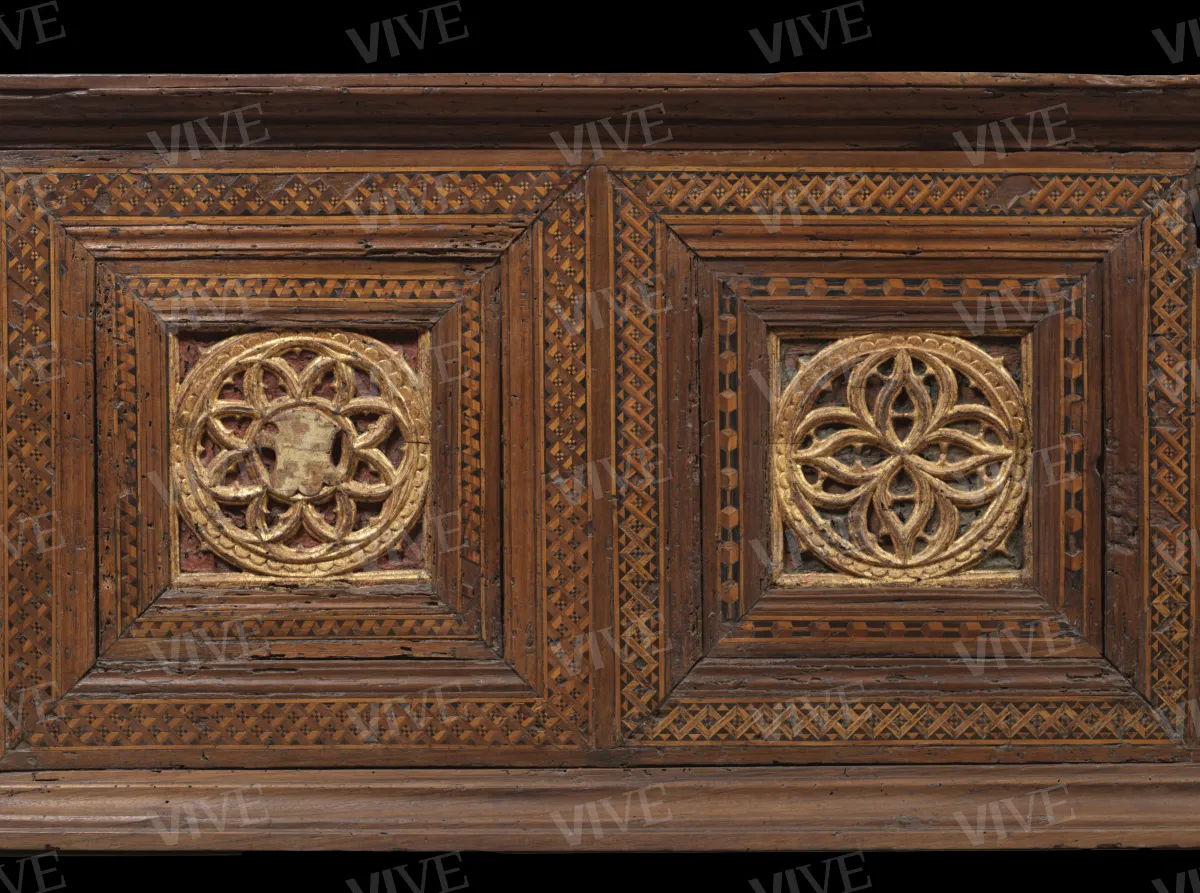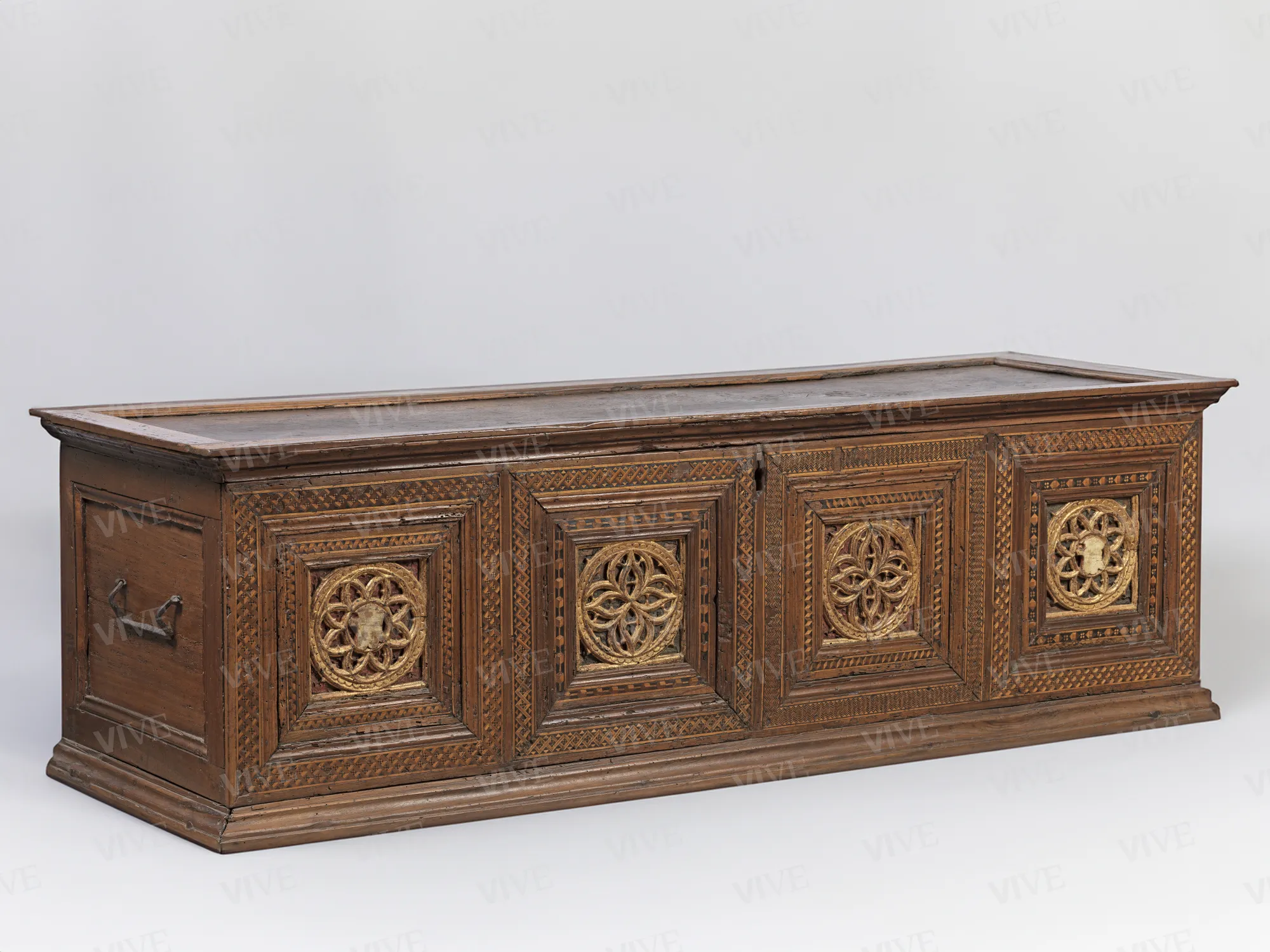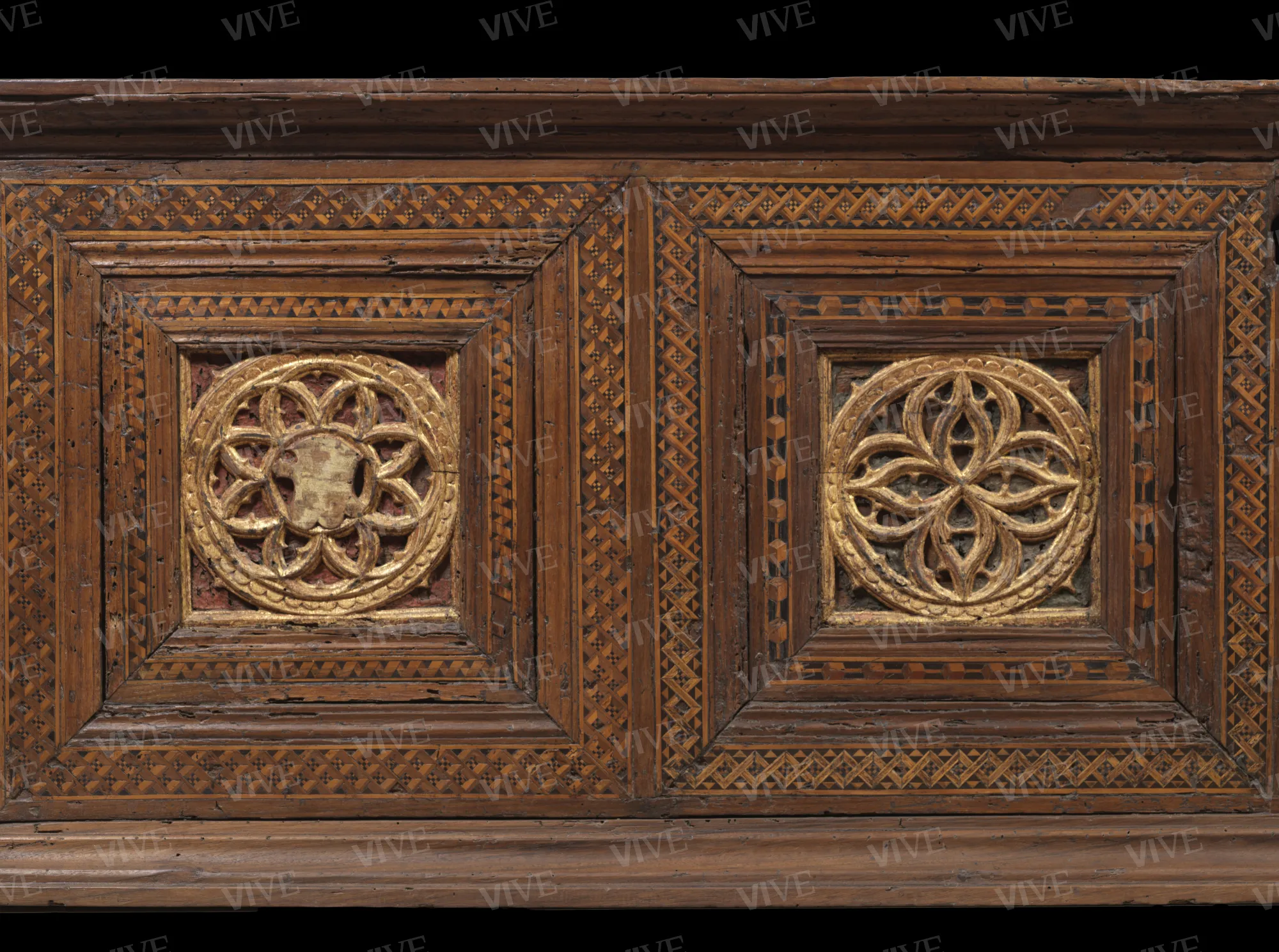Cassone
Northern Italy Second half of 15th century
The cassone, made in fifteenth-century northern Italy, was likely for wedding purposes, as can be inferred from two small, worn shields once displaying the couple’s coats of arms. The front features “a toppo” intarsia frames and carved, gilded rosettes.
The cassone, made in fifteenth-century northern Italy, was likely for wedding purposes, as can be inferred from two small, worn shields once displaying the couple’s coats of arms. The front features “a toppo” intarsia frames and carved, gilded rosettes.
Details of work
Catalog entry
The cassone, featuring a hinged lid and wrought-iron handles on the sides for ease of transportation, is adorned solely on the front aspect. This decoration consists of four square surrounds, accentuated with moulded laths and concentric bands created using “a toppo” intarsia techniques, which involve prefabricated wooden lath bundles. Each framed section showcases a unique decorative motif, including perspective lattice, spiral, interlaced polygons, weave, accordion, and zig-zag patterns.
At the center of each panel lies a roundel that contains a carved and gilded rosette. These rosettes are composed of a quadrilobe with leaves in the central panels and eight small acute arches arranged in a circle in the lateral ones. The rosettes also feature two small “targa” shields, which originally displayed family coats of arms that have since become worn. The presence of these coats of arms suggests the cassone served a matrimonial purpose, traditionally used to hold the bride’s belongings as she moved into her husband’s residence.
Described by Federico Hermanin (Hermanin 1948) as a “Gothic cassone from the fifteenth century, decorated on the front with intarsia and four square panels with Gothic rosettes,” this piece can be attributed to fifteenth-century northern Italian craftsmanship. The work was acquired by the Italian state in 1934 when it took over the collection of the antiquarian Alfredo Barsanti, who was particularly known for his Renaissance bronzes (Cannata 2011). The cassone is now housed at the Museo di Palazzo Venezia.
Lorenzo Mascheretti
Entry published on 27 March 2025
State of conservation
Good.
Restorations and analyses
In May 2005, gas disinfestation was conducted at the Museo Nazionale degli strumenti musicali in Rome.
Provenance
Rome, Collezione Alfredo Barsanti, before 1934;
Rome, Museo Nazionale di Palazzo Venezia, purchased 1934.
References
Hermanin Federico, Il Palazzo di Venezia, Roma 1948, pp. 364, 367;
Cannata Pietro, Sculture in bronzo. Museo Nazionale del Palazzo di Venezia, Roma 2011, pp. 20-25.














